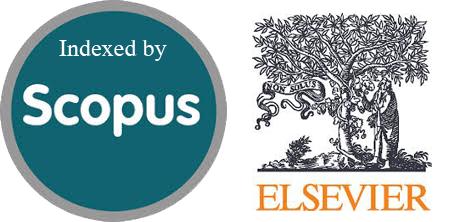Biomedical Implant Coating for Improving Mechanical-Biological Properties: in vivo Study
DOI:
https://doi.org/10.54133/ajms.v8i2(Special).1427Keywords:
In Vivo, Medical Implant, Nanocoating, OsseointegrationAbstract
Background: The utilization of osseointegration and its applications has facilitated significant improvements in the quality of life for individuals who have limb or bone loss. This is because osseointegration fosters growth and connection between the remaining bone and the biomaterial utilized to replace the missing bone. Objective: To achieve optimal biocompatibility and bioactivity with the living organism's bone, further development of biomaterials utilized in osseointegration applications is necessary. Methods: In this regard, the present study utilizes the plasma cold spray technique to deposit a coating comprising 10% silica (SiO2) nanoparticles and 90% hydroxyapatite (HAp) nanoparticles onto (Ti-6Al-4V-ASTM Grade 5) substrates. The properties of the coated layer were analyzed via implantation in a biological setting by conducting the implantation of coated and uncoated substrates into the bodies of living organisms, namely rabbits. Results: The findings indicated that the coating provided important values and advantages, including a unique distribution well-suited for usage in medical implants, as shown by the promising outcomes determined by mechanical and histological analysis of the coated implants subsequent to their implantation in the skeletal systems of living rabbits. Conclusions: The coating conditions with this technology can be easily controlled, along with cost optimization. The process of osseointegration was found to be positively correlated with the duration of healing.
Downloads
References
Hoellwarth JS, Tetsworth K, Rozbruch SR, Handal MB, Coughlan A, Al Muderis M. Osseointegration for amputees: current implants, techniques, and future directions. JBJS Rev. 2020;8(3). doi: 10.2106/jbjs.rvw.19.00043. DOI: https://doi.org/10.2106/JBJS.RVW.19.00043
Li Y, Felländer-Tsai L. The bone anchored prostheses for amputees–Historical development, current status, and future aspects. Biomaterials. 2021;273:120836. doi: 10.1016/j.biomaterials.2021.120836. DOI: https://doi.org/10.1016/j.biomaterials.2021.120836
Atallah R, van de Meent H, Verhamme L, Frölke JP, Leijendekkers RA. Safety, prosthesis wearing time and health-related quality of life of lower extremity bone-anchored prostheses using a press-fit titanium osseointegration implant: a prospective one-year follow-up cohort study. PLoS One. 2020;15(3):e0230027. doi: 10.1371/journal.pone.0230027. DOI: https://doi.org/10.1371/journal.pone.0230027
Bertos GA, Papadopoulos EG, (Eds.), Lower-limb prosthetics. Handbook of biomechatronics: Academic Press London; 2018. p. 241. DOI: https://doi.org/10.1016/B978-0-12-812539-7.00007-6
Reif TJ, Jacobs D, Fragomen AT, Rozbruch SR. Osseointegration Amputation Reconstruction. Curr Physical Med Rehabil Rep. 2022;10(2):61-70. doi: 10.1007/s40141-022-00344-9. DOI: https://doi.org/10.1007/s40141-022-00344-9
Katić J, Krivačić S, Petrović Ž, Mikić D, Marciuš M. Titanium implant alloy modified by electrochemically deposited functional bioactive calcium phosphate coatings. Coatings. 2023;13(3):640. doi: 10.3390/coatings13030640. DOI: https://doi.org/10.3390/coatings13030640
Zhang LC, Chen LY. A review on biomedical titanium alloys: recent progress and prospect. Adv Engineer Mater. 2019;21(4):1801215. doi: 10.1002/adem.201801215. DOI: https://doi.org/10.1002/adem.201801215
Narayanan R, Seshadri S, Kwon T, Kim K. Calcium phosphate‐based coatings on titanium and its alloys. J Biomed Mater Res Part B: Appl Biomaer. 2008;85(1):279-99. doi: 10.1002/jbm.b.30932. DOI: https://doi.org/10.1002/jbm.b.30932
Kirk PB. Sol-gel-derived zirconia thin film coatings for Ti-6A1-4V and 316L stainless steel implant applications, a study of zirconia microstructure and the response of the coating-substrate system to applied deformation. Thesis. University of Toronto. 1997.
Ravarian R, Moztarzadeh F, Hashjin MS, Rabiee S, Khoshakhlagh P, Tahriri M. Synthesis, characterization and bioactivity investigation of bioglass/hydroxyapatite composite. Ceramics Int. 2010;36(1):291-7. doi: 10.1016/j.ceramint.2009.09.016. DOI: https://doi.org/10.1016/j.ceramint.2009.09.016
Garibay-Alvarado JA, Espinosa Cristóbal LF, Reyes-López SY. Fibrous silica-hydroxyapatite composite by electrospinning. ICB. 2017. doi: 10.29121/granthaalayah.v5.i2.2017.1701. DOI: https://doi.org/10.29121/granthaalayah.v5.i2.2017.1701
Melnikova I, Nikolaev A, Lyasnikova A, (Eds.), Improving the Osseointegration Properties of Biocompatible Plasma-Sprayed Coatings Based on Hydroxyapatite and Al2O3. International Conference on Physics and Mechanics of New Materials and Their Applications; 2021: Springer. DOI: https://doi.org/10.1007/978-3-030-76481-4_9
Dosta S, Cinca N, Vilardell AM, Cano IG, Guilemany JM. Cold Spray Coatings for Biomedical Applications. In: Cavaliere P, (Eds), Cold-Spray Coatings. Springer, Cham. 2018. doi: 10.1007/978-3-319-67183-3_19. DOI: https://doi.org/10.1007/978-3-319-67183-3_19
Almeida D, Sartoretto SC, Calasans-Maia J, Ghiraldini B, Bezerra FJB, Granjeiro JM, et al. In vivo osseointegration evaluation of implants coated with nanostructured hydroxyapatite in low density bone. PloS One. 2023;18(2):e0282067. doi: 10.1371/journal.pone.0282067. DOI: https://doi.org/10.1371/journal.pone.0282067
Hermida JC, Bergula A, Dimaano F, Hawkins M, Colwell CW, D'Lima DD. An in vivo evaluation of bone response to three implant surfaces using a rabbit intramedullary rod model. J Orthopaed Surg Res. 2010;5(1):1-8. doi: 10.1186/1749-799X-5-57. DOI: https://doi.org/10.1186/1749-799X-5-57
Pearce A, Richards R, Milz S, Schneider E, Pearce S. Animal models for implant biomaterial research in bone: A review. Eur Cell Mater. 2007;13(1):1-10. DOI: https://doi.org/10.22203/eCM.v013a01
Razali R, Rahim N, Zainol I, Sharif A, editors. Preparation of dental composite using hydroxyapatite from natural sources and silica. J Physics: Conf Ser. 2018;1097. doi: 10.1088/1742-6596/1097/1/012050. DOI: https://doi.org/10.1088/1742-6596/1097/1/012050
Guerzoni S, Deplaine H, El Haskouri J, Amorós P, Pradas MM, Ulrica Edlund U, et al. Combination of silica nanoparticles with hydroxyapatite reinforces poly (l-lactide acid) scaffolds without loss of bioactivity. J Bioactive Compatible Polymers. 2014;29(1):15-31. doi:10.1177/0883911513513093. DOI: https://doi.org/10.1177/0883911513513093
Zhao L, Mei S, Wang W, Chu PK, Wu Z, Zhang Y. The role of sterilization in the cytocompatibility of titania nanotubes. Biomaterials. 2010;31(8):2055-2063. doi: 10.1016/j.biomaterials.2009.11.103. DOI: https://doi.org/10.1016/j.biomaterials.2009.11.103
Jasim MMH, Hamad TI. Biological enhancement of fabricated nanozirconia composite implant coated with particles of human root dentin; Thesis. University of Baghdad; 2023.
AL-Hilfi MSH. Surface Modification of Ti Alloys by coating with Iraqi fishbone to enhance osseointegration and improve corrosion resistance (in vitro and in vivo Study). Thesis. Mustansiriyah University; 2014.
Miranda Burgos PM. On the influence of micro-and macroscopic surface modifications on bone integration of titanium implants. Thesis. Gothenburg University; 2007.
Hallgren C, Reimers H, Chakarov D, Gold J, Wennerberg A. An in vivo study of bone response to implants topographically modified by laser micromachining. Biomaterials. 2003;24(5):701-710. doi: 10.1016/S0142-9612(02)00266-1. DOI: https://doi.org/10.1016/S0142-9612(02)00266-1
Costa de Almeida C, Sena LÁ, Pinto M, Muller CA, Cavalcanti Lima JH, Soares GdA. In vivo characterization of titanium implants coated with synthetic hydroxyapatite by electrophoresis. Braz Dent J. 2005;16:75-81. doi: 10.1590/S0103-64402005000100013. DOI: https://doi.org/10.1590/S0103-64402005000100013
Hammad TI, Al-Ameer S, Al-Zubaydi T. Histological and mechanical evaluation of electrophoretic bioceramic deposition on Ti-6Al-7Nb dental implants. PhD Thesis, College of Dentistry, University of Baghdad. 2007.
Depprich R, Zipprich H, Ommerborn M, Mahn E, Lammers L, Handschel J, et al. Osseointegration of zirconia implants: an SEM observation of the bone-implant interface. Head Face Med. 2008;4:1-7. doi: 10.1186/1746-160X-4-25. DOI: https://doi.org/10.1186/1746-160X-4-25
Roberts WE, Smith RK, Zilberman Y, Mozsary PG, Smith RS. Osseous adaptation to continuous loading of rigid endosseous implants. Am J Orthodontics. 1984;86(2):95-111. doi: 10.1016/0002-9416(84)90301-4. DOI: https://doi.org/10.1016/0002-9416(84)90301-4
Ramezani M, Mohd Ripin Z, Pasang T, Jiang C-P. Surface engineering of metals: Techniques, characterizations and applications. Metals. 2023;13(7):1299. doi: 10.3390/met13071299. DOI: https://doi.org/10.3390/met13071299

Downloads
Published
How to Cite
Issue
Section
License
Copyright (c) 2025 Al-Rafidain Journal of Medical Sciences ( ISSN 2789-3219 )

This work is licensed under a Creative Commons Attribution-NonCommercial-ShareAlike 4.0 International License.
Published by Al-Rafidain University College. This is an open access journal issued under the CC BY-NC-SA 4.0 license (https://creativecommons.org/licenses/by-nc-sa/4.0/).











